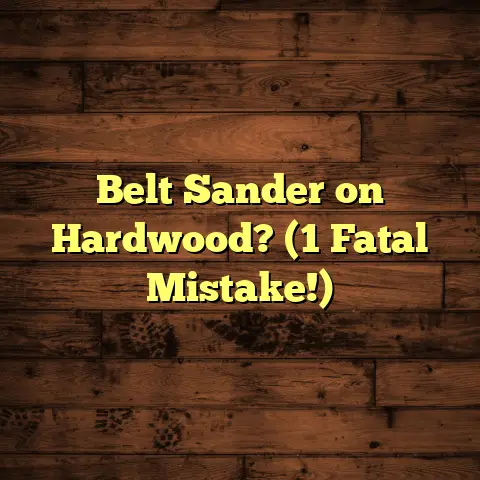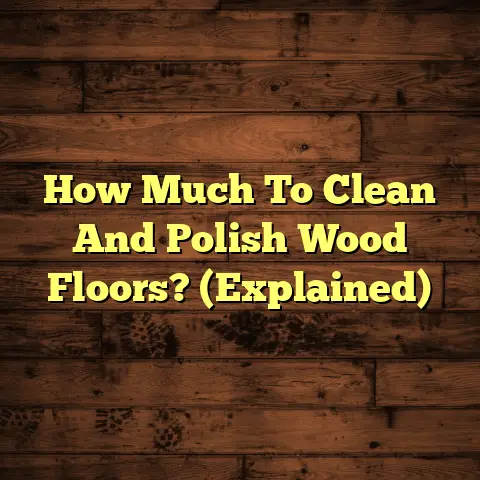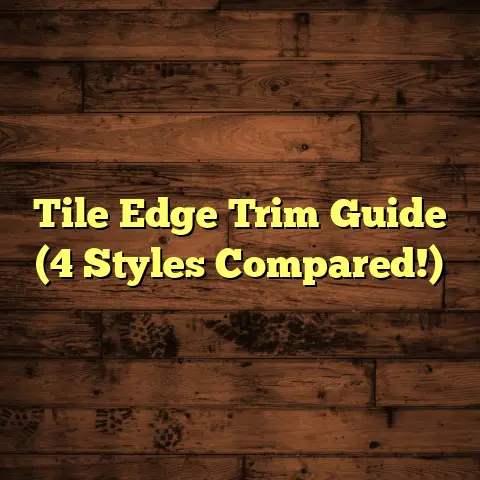4000 Sq Ft Slab: What’s The Real Cost? (2 Price Bombs!)
Hey everyone, it’s your friendly neighborhood flooring contractor back again!
I’ve been seeing a huge shift in the industry lately – everyone’s talking about “going green” and using eco-friendly tech in construction.
And honestly, it’s about time!
We’re not just slapping down concrete anymore; we’re thinking about sustainability, energy efficiency, and how our choices impact the planet.
A big part of that is the foundation itself: the concrete slab.
Now, if you’re planning a new build or a major renovation, you’ve probably heard about concrete slabs.
Especially if you’re dealing with a project around 4000 sq ft.
That’s a decent-sized footprint, and it comes with a decent-sized price tag.
But here’s the thing: the initial cost you see on a quote?
That’s just the tip of the iceberg.
I’m going to pull back the curtain and expose the real costs of a 4000 sq ft slab.
We’re talking material, labor, permits… the whole shebang.
And trust me, there are a couple of massive price bombs lurking beneath the surface that can blow your budget sky-high if you’re not prepared.
But don’t worry, I’m here to help you navigate the minefield and make sure you’re not caught off guard.
Plus, we’ll dive into how eco-tech can actually save you money in the long run.
Ready to get started? Let’s jump in!
Section 1: Understanding Slabs
So, what exactly is a concrete slab?
Simply put, it’s a flat, horizontal concrete surface, typically poured directly onto the ground or supported by a framework.
Think of it as the foundation upon which everything else is built.
Now, there are different types of slabs out there, each with its own pros and cons.
- Monolithic Slabs: These are poured in one single pour, meaning the slab and the footings (the base that supports the slab) are formed together. They’re generally quicker and cheaper to install.
- Slab-on-Grade: This is the most common type, where the slab is poured directly onto compacted soil.
- Insulated Slabs: These incorporate insulation beneath or within the slab to improve energy efficiency.
You’ll find slabs used everywhere – from residential homes and garages to commercial warehouses and industrial facilities.
I’ve personally poured slabs for everything from cozy backyard patios to massive retail spaces.
Why are slabs so popular?
Well, they’re incredibly durable. A well-poured slab can last for decades with minimal maintenance.
They also offer excellent thermal mass, meaning they can absorb and store heat, which can help regulate indoor temperatures and reduce energy costs – especially when paired with eco-tech solutions like radiant heating.
Plus, slabs provide a solid, level surface for flooring, making them ideal for a wide range of finishes, from tile and hardwood to carpet and epoxy coatings.
Section 2: Cost Breakdown of a 4000 Sq Ft Slab
Alright, let’s get down to brass tacks.
What does it really cost to install a 4000 sq ft slab?
It’s not a simple question, and the answer can vary widely depending on a number of factors.
But I’m going to break down the key cost components for you:
-
Material Costs: This is the big one. The type of concrete you use will have a huge impact on the price. Standard concrete mix typically costs around $120-$150 per cubic yard. But if you’re looking at high-performance concrete with special additives for increased durability or sustainability, you could be looking at $200-$300 per cubic yard or more.
- Concrete: $120 – $300 per cubic yard.
- Reinforcement (Rebar/Mesh): $0.50 – $1.50 per square foot.
- Vapor Barrier: $0.10 – $0.30 per square foot.
- Insulation (if applicable): $1 – $3 per square foot.
Don’t forget the reinforcement! Rebar (reinforcing steel bars) or wire mesh is essential for adding strength and preventing cracking. A vapor barrier is also crucial to prevent moisture from seeping up through the slab and causing problems down the road. And if you’re going for an insulated slab, that’ll add to the material costs as well. * Labor Costs: Labor is another significant expense. You’re paying for skilled workers to prepare the site, form the slab, pour and finish the concrete, and handle the reinforcement. * Site Preparation: $1 – $3 per square foot. * Forming and Pouring: $3 – $6 per square foot. * Finishing: $1 – $3 per square foot.
Labor costs can vary depending on the region and the experience level of the crew. Union labor typically costs more than non-union labor. * Equipment Costs: You’ll need a variety of equipment to get the job done, including: * Concrete Mixer: Rental: $50 – $150 per day. * Vibrator: Rental: $30 – $80 per day. * Screed: Rental: $20 – $50 per day. * Power Trowel: Rental: $80 – $200 per day.
Concrete mixers, vibrators (to consolidate the concrete), screeds (to level the surface), and power trowels (to create a smooth finish). You can rent most of this equipment, but rental fees can add up quickly, especially if the project takes longer than expected. * Permits and Fees: Don’t forget the regulatory hurdles! You’ll likely need permits from your local building department to ensure the slab meets code requirements. Permit fees can vary widely depending on your location, but expect to pay anywhere from a few hundred to a few thousand dollars.
So, what’s the bottom line?
Based on these estimates, a 4000 sq ft slab could cost anywhere from $20,000 to $60,000 or more, depending on the specific choices you make.
Here’s a simplified table:
| Cost Component | Estimated Cost Range |
|---|---|
| Materials | $8,000 – $20,000 |
| Labor | $16,000 – $36,000 |
| Equipment | $500 – $2,000 |
| Permits and Fees | $500 – $3,000 |
| Total | $20,000 – $61,000 |
Keep in mind this is a very rough estimate.
It’s crucial to get detailed quotes from multiple contractors to get a more accurate picture of the costs involved in your specific project.
And now, let’s talk about those price bombs I mentioned earlier…
Section 3: The First Price Bomb: Hidden Site Costs
Here it is, folks: Price Bomb #1!
This one’s a doozy, and it’s the reason why so many slab projects end up going over budget.
I’m talking about hidden site costs.
These are the unexpected expenses that pop up after you’ve already started the project, and they can be a real pain in the wallet.
What kind of hidden costs are we talking about?
Well, for starters, there’s site preparation.
Is your site perfectly level and ready for concrete? Probably not.
You might need to clear trees, remove topsoil, and compact the ground to create a stable base for the slab.
This can involve heavy equipment and a lot of extra labor, which translates to more money.
Then there’s the dreaded soil conditions.
If your soil is unstable or contains a lot of clay, you might need to bring in fill material to improve its load-bearing capacity.
In extreme cases, you might even need to install pilings or other structural supports to prevent the slab from settling or cracking.
I once worked on a project where we discovered an underground spring after we had already started excavating.
We had to reroute the spring and install a drainage system, which added thousands of dollars to the budget.
Unforeseen structural modifications are another common culprit.
Sometimes, you don’t know what’s lurking beneath the surface until you start digging.
You might encounter old foundations, buried utilities, or even hazardous materials that need to be removed.
These discoveries can require costly modifications to the slab design and construction process.
How can eco-tech help with these hidden costs?
Well, for one thing, advanced site assessment technologies like ground-penetrating radar (GPR) can help you identify potential problems before you start digging.
This allows you to plan accordingly and avoid costly surprises.
Plus, using sustainable materials like recycled concrete aggregate can reduce the amount of new material you need to bring to the site, which can save on transportation costs and reduce your environmental impact.
Here’s a real-world example:
I worked on a project where the client wanted to build a large workshop on a sloped lot.
We used 3D modeling software to create a detailed site plan and identify potential grading issues.
By using this technology, we were able to accurately estimate the amount of excavation and fill required, which helped us avoid cost overruns.
Section 4: The Second Price Bomb: Long-Term Costs
Alright, buckle up, because here comes Price Bomb #2!
This one’s a bit more subtle than the first, but it can be just as damaging to your long-term financial health.
I’m talking about long-term costs associated with maintenance and energy efficiency.
It’s easy to focus on the upfront cost of a slab, but you also need to consider the ongoing expenses that can arise over time.
For example, certain slab choices can lead to increased energy consumption.
If your slab isn’t properly insulated, you could be losing a significant amount of heat in the winter and cool air in the summer.
This can drive up your energy bills and put a strain on your HVAC system.
And let’s not forget about the potential for future renovations or repairs.
Cracks in the slab can lead to water damage, mold growth, and structural problems.
Repairing or replacing a damaged slab can be a major undertaking, costing thousands of dollars.
I’ve seen cases where homeowners had to completely tear up their flooring and rebuild the slab due to poor initial construction or inadequate maintenance.
How can eco-tech help offset these long-term costs?
By incorporating energy-efficient features into your slab design, you can significantly reduce your energy consumption and save money over the long haul.
For example, radiant floor heating systems embedded in the slab can provide comfortable, even heat while using less energy than traditional forced-air systems.
Insulating the slab can also make a big difference, reducing heat loss and keeping your home or building more comfortable year-round.
I also recommend considering sustainable flooring options that are durable, low-maintenance, and resistant to moisture and mold.
These materials can help prevent costly repairs and replacements down the road.
Here’s another real-world example:
I worked on a project where the client wanted to build a passive solar home.
We designed the slab with extra insulation and incorporated a thermal mass design to absorb and store heat from the sun.
This reduced the client’s heating bills by over 50% compared to a traditional home.
Section 5: The ROI on Eco-Tech Solutions
Okay, so we’ve talked about the costs. Now let’s talk about the benefits.
What’s the return on investment (ROI) of incorporating eco-tech solutions into your slab construction?
The truth is, going green isn’t just good for the environment; it can also be good for your wallet.
Here are some of the key benefits:
- Energy Savings: As I mentioned earlier, energy-efficient slab designs can significantly reduce your heating and cooling costs. Radiant floor heating, insulation, and thermal mass can all contribute to lower energy bills.
- Lower Environmental Impact: Using sustainable materials like recycled concrete aggregate and reducing your energy consumption can help minimize your carbon footprint.
- Potential Tax Incentives: Many local, state, and federal governments offer tax incentives for energy-efficient construction projects. These incentives can help offset the upfront costs of eco-tech solutions.
- Increased Property Value: Homes and buildings with eco-friendly features are becoming increasingly desirable to buyers. Investing in eco-tech can boost your property value and make it easier to sell in the future.
But what about the upfront costs?
Isn’t eco-tech more expensive?
Well, sometimes, yes. But the key is to look at the long-term picture.
While eco-tech solutions might have a higher initial cost, they can often pay for themselves in the form of energy savings and other benefits over time.
According to the U.S. Department of Energy, investing in energy-efficient building technologies can result in a payback period of just a few years.
Here’s a table summarizing the potential ROI of eco-tech solutions:
| Eco-Tech Solution | Potential ROI I’m talking about costs like:
- Site Preparation: $1 – $3 per square foot.
- Soil Conditions: $2 – $5 per square foot.
- Unforeseen structural modifications: $3 – $10 per square foot.
Conclusion
Alright, that’s a wrap!
We’ve covered a lot of ground in this article, from the basics of concrete slabs to the hidden costs and the benefits of eco-tech solutions.
I hope you found this information helpful and that it gives you a better understanding of what to expect when planning your 4000 sq ft slab project.
Remember, the key is to be prepared, do your research, and work with experienced professionals who can guide you through the process.
Don’t be afraid to ask questions and challenge assumptions.
The more informed you are, the better equipped you’ll be to make smart decisions and avoid costly mistakes.
And most importantly, don’t underestimate the power of eco-tech.
Investing in sustainable solutions can not only save you money in the long run but also help create a healthier and more environmentally friendly future.
So, go forth and build with confidence!
And if you ever need a hand with your flooring project, you know where to find me.





